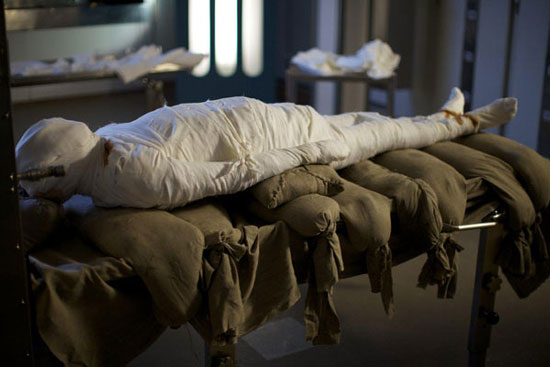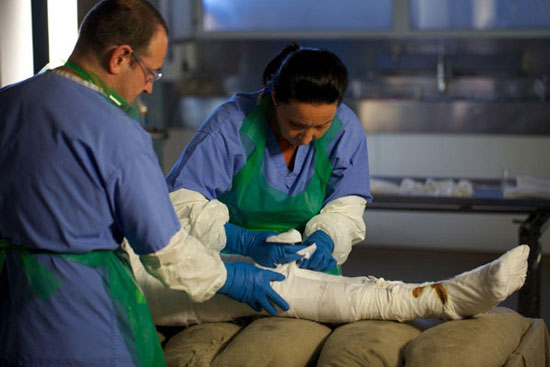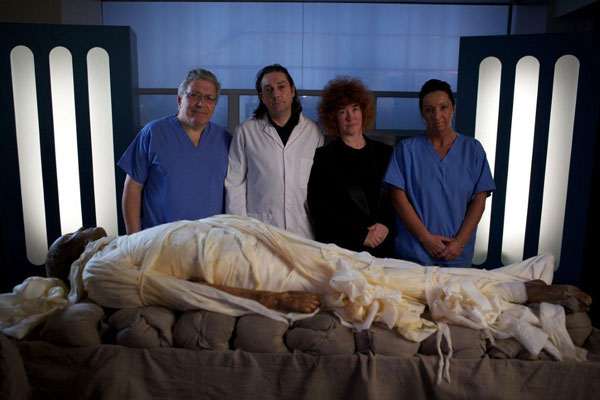The first person to embalm like the Egyptian king
Scientists apply the technique of ancient Egyptian mummification on the body of a taxi driver in England.
Discovery said Alan Billis, who used to live in Torquay, Devon County, England before his death, was diagnosed with cancer. At the same time, scientists announced to find a donor to carry out a project to restore the technique of embalming the ancient Egyptians on King Tutankhamun's body. The 61-year-old taxi driver decided to donate the body and get the support of the family. After he died a few months ago, his body was taken to the city of Sheffield to marinate.

Scientists apply embalming techniques from the dynasty
Egypt's 18th on Alan Billis's body. (Photo: Discovery)
Billis mummification is recorded in a documentary called " Mummifying Alan: Egypt's Last Secret" . The movie will be shown on Channel 4 on October 24.
"I read the newspaper and saw the announcement to find a donor to test the ancient Egyptian embalming technique. Countless people have donated their bodies to science for years. If they do not, scientists will could not find new knowledge, " Billis once said to the documentary group.

University of York chemist Stephen Buckley is one of the participants in the process of embalming Billis. In the past 19 years he has studied the technique of embalming that ancient Egyptians applied during the reign of the 18th dynasty. One of Buckley's associates was archaeologist Jo Fletcher, who studied the mummy for many years.
The expert team used modern tools, such as chromatography analyzers, to search for materials that ancient Egyptians used to embalm. They found beeswax, many oils and sap.

"We believe Billis's body will be preserved as long as the best mummies of ancient Egyptians in the 18th dynasty," Buckley said.
Buckley and his colleagues hope the process of embalming Billis will help them create a new way of preserving living tissue. Historically scientists have used formaldehyde (HCHO) to preserve tissue and bodies. It is colorless, has a pungent odor, is flammable, easy to dissolve and cause cancer.
- New timeline for the beginning of ancient Egypt
- Discovered a new ancient Egyptian king
- Cleopatra was not the first female king in her reign
- Revealing the incredible truth few people know about ancient Egypt
- Restoring the coffin of King Tutankhamun for the first time in nearly 100 years
- Successfully decipher the mysterious mummy penis of the Egyptian king
- Valley of Egyptian kings
- The legendary king used 300 people to beat
- The mausoleum of the beautiful Queen of Egypt despite the destruction of her stepmother
- The hidden room in King Tut's tomb is full of treasures
- The mysterious trumpet carries the curse of the Egyptian pharaoh
- Discovered the giant statue of the Egyptian king
 'Fine laughs' - Scary and painful torture in ancient times
'Fine laughs' - Scary and painful torture in ancient times The sequence of numbers 142857 of the Egyptian pyramids is known as the strangest number in the world - Why?
The sequence of numbers 142857 of the Egyptian pyramids is known as the strangest number in the world - Why? History of the iron
History of the iron What is alum?
What is alum?